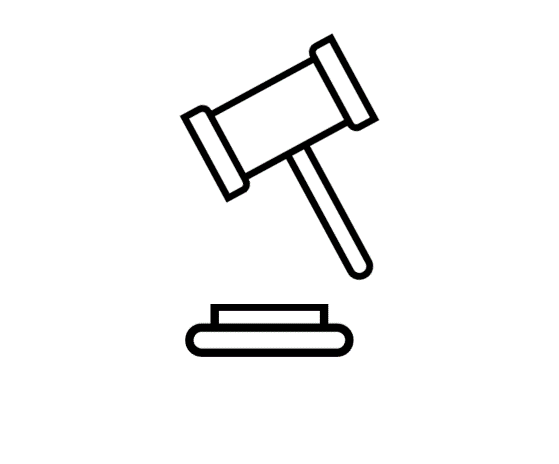Full timeline
Here is the full timeline with all the relevant information about the oil adventure and also the resistance against the oil industry.
Use the ancor-menu to the right to navigat between years or scroll down.

We start at the very beginning, the year Norway found oil. An extreme source of wealth, but also a source of conflict in the coming years.

1969
Ocean Viking Ekofisk reservoir was found.
The day before christmas marks an important date in Norwegian oil history. Phillips informed the Norwegian authorities of the findings of the Ekofisk-field. The field would be recognized as one of the largest findings of oil up until the 1970s.
1970s
Start of demonstrations against the oil industry.
As the attention towards the consequences of the oil industry starts to appear, the first demonstrations becomes a regular thing as well. This would be a sign of things to come, as the climate movement still is going strong 50 years later.

Sami people demonstrating in 1979. | Photo: © Bernt Eide / Samfoto
Prime minister in Norway, Trygve Bratteli officially opened the Ekofisk-field. Here, he is on a tour on the Phillipsgroup trial-platform "Gulftide Bak". Bildet er tatt i 1971.
Photo: NTB scanpix

Hand-drawn map over the licences that was handed out in the first round of licencing on the Norwegian continental shelf.
Photo: Norwegian Oil Museum
1971
The production in the Ekofisk area started
From the moment we found and located the Ekofisk area, it would take another 18 months to start drilling. The reservoar estimates have varied since the early days of it being found. However, the field is still active to this day. Ever since the field were established we´ve seen a total of 32 platforms in total which has been, or is still active.
1972

Statoil starts as an oil industry linked to the Norwegian state, regulated directly by the government.
On June 14th 1971 the Norwegian State Oil Company (Statoil) was estatblished as a result of a unanimously enactment. The Norwegian government saw the potential in the oil industry.
The Norwegian government then started investing in oil, and The Oil Directorate was established, alongside with Statoil. The Oil Directorate's role was to work on licencing calls for the oil industry, and give out licences.
The same year, a representative at stortinget suggests a new constitution, obligating the government to protect the nature and natural resources. This suggestion was denied in 1975 against one vote


1974
Photo: Stortingsarkivet
The oil related politics starts.
Stortingsmelding 25 is the first to define the petroleum industry’s place in the Norwegian society. In this Stortingsmelding (Government issue) the foundation and design of the petroleumindustries role in and for the norwegian society is layed down.
They wanted it to be a stateowned oil company, which were esatblished with Statoil. A well established plan on the income and dividends coming from it, with strong and strict regulations which, both for the climate and for the employees.
1975
Starting the search for oil in the Barents sea.
The Barents sea region, which sparked the climate lawsuit with its new licences in 2016, first started its search and drilling back in 1975. The Barents sea is a rough sea-area which also operates as an important asset to the marine and fishing industry.


1977
BRAVO incident releases 9000 tonnes of oil in Nordsjøen.
It almost goes without saying, however, with the oil industry and work related to it, there comes a lot of risks. On April 22nd in 1977 we got to see the how bad it could get when an accident all of a sudden happens.
During some maintenance work on one of the production wells, the well started to blow out oil. During a period of eight days from 22nd to 30th april the oil spilled out in the sea.
The initial estimates reported a total spill of 20 000 tonnes of oil, however more recently reports estimated the total loss to 9 000 tonnes instead.
This just goes to show HOW bad it could be once it happens. This accident revealed a lot of severe lacks of security in the industry, and they´ve learned a lot from it since. This doesn’t mean it wont happen again, and we´ve seen several accidents since both in Norway and in the world.
Gassfield Frigg is activated.
Photo: Unknown/NTP Scanpix
1980s

1980
Searching for oil in Nordsjøen, first boring north of the 62 latitude.

1984-1985
Snøhvitfeltet, Draugenfeltet, Heidrunfeltet in Nordsjøen are discovered.
1984: another suggestion to include protection of nature and climate in the constitution was denied
1990s
1990
The establishment of “Statens pensjonsfond utland”/The norwegian pension fund utland.
From the beginning of the Norwegian oil adventure, one thing was clear. This wouldn’t last forever. To make sure that the income of the petroleum industry would last and be available for future generations to come, the norwegian pension fund was created.
On an international scale it is quite unique as well. Our petroleum income has been managed in a way that makes sure it is in the norwegian populations best interest.
As of today, this fund is worth over 11 000 billion norwegian kroner.

1992
Paragraph 110b was included in the constitution in Norway, stating that:
All people have the right to an environment enruring peoples health and a nature where resources and biodiversity is preserved.
The resources in the nature is to be disposed based on a long-term and versatile way, preserving resources for later generations.
1993
First oil production in Nordsjøen starts.
Heidrunfeltet/the Heidrun field is opened and is the first field in Nordsjøen to provide with oil and gas.

2000s
Statoil is privatized.
After several years as being an industry under the government, the government accepted Statoil to become an independent industrial sector.
Demonstrations outside stortinget.
A large demonstration against the oil industry is held ouside Stortinget in Oslo.
2001
2003

2006
The oil- and energy department changes the petroleum regulation. The oil companies now have to include evaluations of climate and emissions in their applications for drilling and reports.
2012
"Klimaforliket" at the Norwegian parliament. Stortinget agrees on several terms and measures to reduce carbon emissions and contribute in minimizing global warming. The aim of the agreement was to reduce the Norwegian CO2 emissions with 30% by 2020, this goal was not reached.
Results of the potential profit (economic, employment, extraction volumes) from oil exploration in the Barents Sea is published by both the Oil- and Energydepartment and Oljedirektoratet. The results are conflicting.
2014
Grunnlovsrevisjon. Paragraph 110b modernized in written form and moved to §112.

2016
Hover over to see the events
June
October
the government awards ten new oil licenses. Norway ratifies the Paris agreement.
Greenpeace and Natur og Ungdom (Young Friends of the Earth Norway) sue the Norwegian state. The lawsuit is based on the violation of article §112, and targets the licensing for oil industries, aiming to stop further oil explorations to reduce CO2 emissions.
May
The Norwegian government offers ten new oil exploitation permits through the 23. round of concessions
April
Norway signs the Paris agreement, committing to several measures to stop climate change
The Paris agreement is a vital “turning point” in the modern history of climate changes. A international collaborative agreement wants to make sure that we are entering a more sustainable and greener future than what we are living in now.
At the same time the Norwegian government offer ten new oil exploaration permits. (Link to the lawsuit page)
Later this year marks the start of the much talked about climate lawsuit. Greenpeace and the norwegian climate activist group Natur & Ungdom sues the governement, claiming violations of §112 in the Norwegian constitution.
2017
Hover over to see the events
July
Besteforeldrenes Klimaaksjon (The Grandparents Climate Campaign) joins the lawsuit as third-party interveners
February
February: Oslo District Court announces the court date
November
The climate lawsuit starts in Oslo District Court

Greenpeace and Natur og Ungdom (Young Friends of the Earth Norway) sue the Norwegian state.
Activation of production in 5 fields, 9 fields under construction
2018
Hover over to see the events
February
Natur og Ungdom and Greenpeace appeal the court decision and request a direct appeal to the supreme court.
January
Oslo District Court delivers its judgement.
The case is denied in the Oslo district court.
The oil and energy department is frikjent and Natur og Ungdom, Greenpeace Norden and Besteforeldrenes klimaaksjon got two weeks to pay the court expences at
580 000NOK.
April
Direct appeal to the Supreme Court is declined, and the case is sent to Borgarting Appeal Court

Greenpeace and Natur og Ungdom (Young Friends of the Earth Norway) sue the Norwegian state.
Found of Johan Castberg field in the Barents sea, planned start of production is 2022
2019
Hover over to see the events
November
The appeal court proceedings begin
August
Friends of the Earth Norway (Naturvernforbundet, the Norwegian Association for the Conservation of Nature) join the lawsuit as third-party interveners

Greenpeace and Natur og Ungdom (Young Friends of the Earth Norway) sue the Norwegian state.
The extraction and production of oil and gas in the Johan Sverdrup field begins.
EU implements Norway in a binding contract to contribute in reaching the goald for reducing emissions by 2030 through the EØS agreement. Norway then had to decrease their emissions by 40% of the levels in 1990 by 2030 and 80-95% reduction by 2050.
December
December: Klimarisikoutvalget published a report on climatic risks and Norwegian economy. The report includes emissions linked to Norwegian export of materials such as oil, emphazsizing a much higher amount of emissions.

2020
Hover over to see the events
February
The plaintiffs appeal to the Supreme Court.
The lawsuit is reformulated, and now only concerns the Barents sea.
January
Borgarting Appeal Court delivers its judgement. The case is denied again.
April
The Supreme Court announces that it will hear an appeal

Greenpeace and Natur og Ungdom (Young Friends of the Earth Norway) sue the Norwegian state.
Found of Johan Castberg field in the Barents sea, planned start of production is 2022

January: the lawsuit is taken to the European Court of Human Rights
2021
2022
Hover over to see the events
February
The second working report published by IPCC shows severe impacts if global warming is not stopped.

Greenpeace and Natur og Ungdom (Young Friends of the Earth Norway) sue the Norwegian state.
53 new oil lisences was handed out by the Norwegian government despite the terms given in the Paris agreement and COP26.
April 2022

IPCC handed out the 3rd working report, stating necessary actions to reduce global warming.
If we continue with the same levels of emissions that we currently emit, global temperature will rise to 3,2 degrees celcius over pre-industrial time within 2100.
The report calls for urgent action as we have all the necessary technology and resources to reach an emission-maximum within 2025, which is necessary to reduce global warming. however, this is highly dependent upon pilicy makers and economic drivers.
The regulatory body in the Norwegian Government that controls that the government follows the humanitarian rights states:
"To approve new fields for oil is a violation of the Norwegian Constitution"
They also stated that no more oil licences should be handed out.